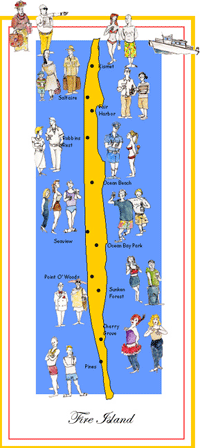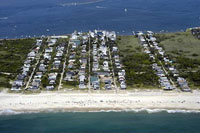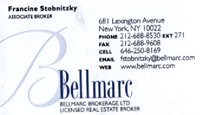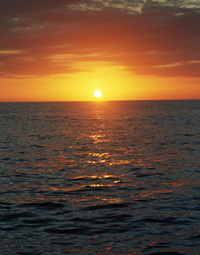PROTECTING YOUR DUNE FROM THE
NEXT SANDY
Seaside Primary Dune
Development-Northern Beach Grass Dune
By Todd Erickson
.
Plantinghabitats.com
Todd@plantinghabitats.com


Northern
Dunes-Sunrise 2011
Sandy
2012 has taken its toll on Fire Island, reminiscent of several major storms
from the past, including Katrina, 2011. However this storm has proven the test
of a dune practice set in place for over 30 years in Cherry Grove that resisted
high ocean currents from over washing into the community and scooping away less
than half of Cherry Groves dune fronts. With quick remediation efforts in
clearing the dunes and installing dune fencing, already over one season sand
burial has buried one and two rows of fences, with potential grass growth for
the spring of 2014 looking more than prosperous.
Why
is dune fencing and grass planting essential? In residential
communities where development encroaches the seashore, erosion and public
activities undermine healthy natural dune growth. Grass cannot grow where
footpaths are created. Storm erosion leading up to house fronts need further
enhancement without grass addition and sand entrapment. A natural primary dune
would have grass on hand to re bloom sending new root systems forward into the
eroded region.
On a
residence where grass is depleted the process cannot begin again.
The Primary dune has a colony of pioneer
plant species that thrive from and tolerate salacious winds and sea wash.
Beach grass, pea-vine, and dusty miller are three
major and minor dune plant stabilizers to our Northern Beach Grass Dunes that I
have found growing on healthy dune systems of Fire Island. In my
experience as a professional horticulturalist, on Fire Island these pioneer
plant species are excellent for dune front development and rejuvenation.
Dune fencing is an alternative sought out for residential areas
along the shore where erosion, building development, and foot traffic prevent
and furthermore damage the dune from continuing to prosper. In order to
achieve a primary dune, that protects the shore from bad sea storms and major
out washes, dune fencing together with select pioneer plant development is your
best strategy. Secondary to seaside dune development is lea-side dune
shrub growth. I call the lea-side the “spine”, or the back-dune. It is another
component to building a high dune with the fortitude to strengthen seaside
growth.
 Ammophilia
breviligulata-American beach grass- Seed blooms in the fall.
Ammophilia
breviligulata-American beach grass- Seed blooms in the fall.
 Lathyrus
japonicus-Sea peavine-Blooms repeatedly all summer. A healthy dune is full of
beach peavine.
Lathyrus
japonicus-Sea peavine-Blooms repeatedly all summer. A healthy dune is full of
beach peavine.
 Artemisia
stelleriana Bess.-Dusty Miller, Spring Blooms
Artemisia
stelleriana Bess.-Dusty Miller, Spring Blooms
The primary dunes are high from years of beach grass growth,
the most important pioneer plant on Fire Island. Beach grass combined
with periodic sand burial creates a mound, or what I call the “Foot” of a dune.
Basically these mounds are healthy fields of beach grass and pea-vine,
plus several other plant species. The foot acts as a wind buffer for a
back dune shrub-land to establish. The shrub-land adds more strength to
the dunes physical and aesthetic presence on the sea, and its capacity to build
higher, acting as the spine or backbone to the dune body. Without the
seaside foot of a dune gradating high enough from years of grass growth and
sand entrapment, a back-dune could not establish shrub-land plant species.
I will further define back dune shrub-land plant species in my next blog,
Lea-side Dune Shrub-lands. To continue upon primary dune
building, the dune foot has two major contributors in its creation; growth and
destruction.
 High
Primary Dune With Foot Path Erosion-Fall
High
Primary Dune With Foot Path Erosion-Fall
On the seaside, sand is constantly moving
from wind and shifting east and west tidal currents; the two major
contributors in creating the front of a primary dune system. Sand is
carried throughout the season up and down the shoreline by the oceans current,
then deposited on the beach and wind-blown into the grass fields where it is
trapped and stabilized. Sea over-wash floods the dune grass periodically
and can deposit as well as claim the sand throughout the year. As the
soaked grass tufts die back from sea salting they decay, adding organic
material to the dune structure. We know the dune is not made of pure sand
but decaying grass matter and sand combined. The grass clumps will
re-bloom, and the sand collects at the base of the plant and is
trapped yet again. This process is constant.
Over the years of average and severe weather patterns,
coordinated with the grass and pea-vine growth, the dune foot inclines/declines
with the wind and wave currents. Regeneration and degeneration is
prevalent in the life cycle of a dune.

Primary Dune Storm Erosion
In
this image we can see the dune front eroded by sea over-wash from a hurricane
in the summer of 2011. In the section cut away, the dense grass matter is
revealed and shows how the dune structure maintains a high level of organic
matter.
In late fall, winter, and early spring, I have observed that the
shore’s waves break much closer to the dunes than in the summer months.
Many people, who arrive in the spring, comment that the beach was lost
over the winter. It can seem quite dramatic when the beach is cut up with
deep cliff-like drops up to 5 feet. The ocean has a wild way of removing sand
and bringing it back month by month. But alas don’t be fooled, sand is
always returned. However, if the dunes have suffered plant loss, the
summer season will continue to wear them down. Rejuvenation is a process
we can all take part in. How?
In my observation one can see that the lowest point of the
dune front starts where the highest point of the waves break during the off
season months. This is approximately 85 to 90 feet back from your average sea
line. At this point the grade of the dune starts to rise as the grass
beds thrive and build. The decaying of grass and other plant material is
key for the increasing of dune gradation. If the dune were only made of
sand, we could simply pile up sand for our remediation efforts. One big
problem. The dune would be moving constantly, shifting positions and not
reaching the levels we see on a strong dune front that can resist high ocean
currents. Sand pyramids for beach protection, are truly temporary without beach
grass layered within. Buried grass adds body, weight, and moisture to the dune,
as well as important fungi and essential bacteria that the beach grass thrives
on. Decayed matter to sand ratio, is essential for good grass
growth. Once footpaths and erosion takes place, the dune is compromised
and can take years to re-seed on its own. Continual beach grass seeding
and planting is essential, along with dune fencing, to rejuvenate eroded dunes
in residential shoreline areas.

Beach
Grass Burial
The grass dune, when lush, will mound up to 5 feet,
allowing the high dune to evolve in tandem with a back-dune shrub-land,
supporting the high dune growth. A solid dune reaches a height of 18 feet
and greater. The dunes are bio-engineered structures natural to barrier
island and coastline topography. Natural dune structures have been studied and
can be modeled for dune regeneration practices with excellent success.
Dune regeneration in front of residential development on the coastline
need to apply grass and fencing strategies to overcome residential development
of what would naturally occur on the national seashore over time. Given
winter current activity, chances are there is not enough room for a dune to
establish where a house has been built into the typical dune line. It may
be possible to achieve a grass bed with a dune front up to 5 feet in depth.
I have seen grass beds form on the shore where the original dune line is
crowded out by a seaside house or pool front property. These grass beds
need to last and should be replenished when a big storm hits with yearly grass
plug plantings, fertilization, and dune fences set in place at least four times
a year. Thus the farther back a healthy dune, the better it stands a
chance against big storms.

Grass
Dune Foot'-Winter
Dune fencing is a system to help erosion from tearing
down the dunes. Foot and car traffic on the beach, major storms, and
tidal currents, are all examples of erosion causes. Dune fencing is
helpful to maintain these major shifts, but without the basic pioneer plants to
trap and hold down the sands, a dune will not grow.
Todd’s Dune Grass Hypothesis: Dunes
without grass are unstable, and lose more sand than dunes
with grass. On average, sand is moving constantly at 4mm per
second. Grassy dunes in actuality compile more sand from their
neighboring bald dunes. The sand simply skips on down until it reaches a
place of entrapment. The barren dune or sand pyramids ultimately feed
other grassy areas. With my research and expertise as a horticulturalist,
this hypothesis is my opinion given what I have seen throughout the years.
One can see how this hypothesis is working through the relationship of
dune life in its development, from The Pines to Cherry Grove, in Fire Island
NY. In the Pines, when the wind direction is east to west, there is a
long row of barren sand dunes that transfers sand westward to the Grove.
Grove dunes are constantly cared for, resulting in a lush grass front.
The Grove benefits from the sand transfer, where as, the dunes in the Pines
lose sand due to the lack of grass for sand entrapment. When the wind
direction is west to east, far less sand is carried to the Pines, because Grove
dunes have stabilized the sand, proving beach grass is key…

Proper
Dune Fencing-Serpentine
Growing up on Long Island, I have spent my whole life
exploring the north and south shore beaches. I have seen
several ways to execute dune fencing. Dune fencing’s best overall
design by far, is the serpentine style. Serpentines structural form is laid
out to curve in such a way that it would stand on its own, even on a hard flat
marble floor. A 2 foot or 4 foot fence is hammered into the sand on any beach
with a gradient or grass deficit. 2 foot fences are created by sawing the
4 foot fence in half, while it is still in the roll form. In the
summer months I have seen sand reach the top of a serpentine fence. The
fence installed in the spring or even as early as in winter months, and will
collect sand in the summer, allowing time for another row to be installed in
the summer and fall. This increases the dunes foot for grass plugs and or
seeding, and allows nature to take its course. The desired site of your
first row of dune fencing to be achieved is approximately 85 feet from the
average sea line, defined by winter wave activity or the storm erosion line
seen in the dune. Sand build-up is the key in allowing the primary dune
to evolve through all of its stages over time to reach its full capacity to
protect from storms. Storms that wipe away a fencerow and erode the dune
front can be fixed quickly. With new fencing rows installed, the sand
will come back and reshape the dune front before the next season. By
following up with grass seed or plugs every early spring, the dune is back on
track. The method is a proven strategy that works.
If the fencing is not serpentine, but a wide V shape, it would
fall down on its own. I have seen 2 x 4′s substituted for structure
as stakes. The 2 x 4′s weigh it down and if the sea reached the
fence, they would take down the fence prematurely, possibly within weeks of
installation. Sometimes too much structure is overkill. The serpentine
form is self supporting and proven to work along the North East Atlantic coast
for hundreds of communities. Dune fencing is ideally designed for a flat
plane and will hold the sand until a second or third fencerow is required.
With the addition of grass we have a proven beginning for primary dune
recovery.

Dune Fence Winter 2013, Cherry Grove
Bibliography
Art, Henry Warren
Ecological Studies of the Sunken Forest
Fire Island National Seashore New York
National Park Service 1976



















